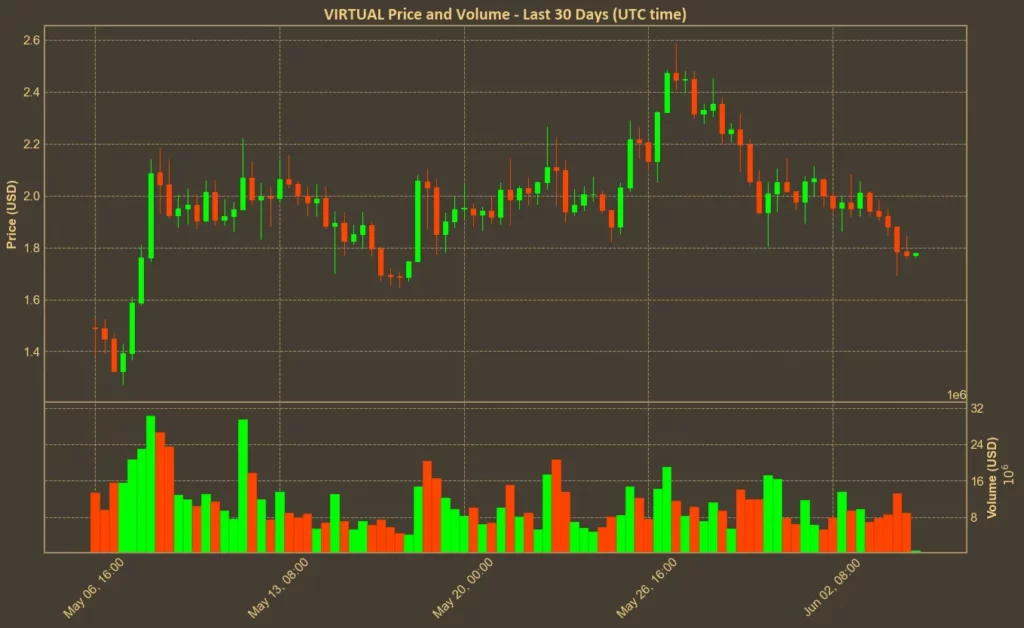Virtuals Protocol (VIRTUAL) has fallen over 8% in the past 24 hours, bringing its current price to $1.76. This decline continues a broader downtrend that began earlier – over the past seven days, VIRTUAL has lost nearly 25% of its value, dropping from $2.35. While it remains well above its April low of $0.50, the correction has raised questions about how sustainable the recent rally was.

The recent dip follows a strong price recovery in late April and early May, largely driven by renewed interest in the project following the launch of Genesis – a new distribution mechanism that emphasizes participation over capital.
Table of Contents
Genesis Launch and Increased Ecosystem Activity
Genesis officially launched on April 17, introducing a permissionless token distribution system for AI agents within the Virtuals Protocol ecosystem. Unlike traditional models that rely on capital contributions or presale allocations, Genesis assigns token distribution based on user participation. Activity such as staking, trading, and social engagement contributes to users’ standing within the protocol via daily-emitted “Virgen Points.”
According to Virtuals Protocol, the system is designed to discourage short-term speculation and instead reward consistent activity. The launch was followed by exchange listing on Binance US, and community engagement rose sharply across multiple channels.
Performance Metrics and Current Concerns
Despite the initial boost in interest and trading volume, recent on-chain data shows signs of stagnation in some areas. Daily DEX volume and wallet activity have increased compared to April, but they remain below January highs.
More notably, the number of new AI agents being created each day has decreased significantly. Most days since February have seen fewer than 10 new AI agents launched, down from over 100 per day in December. This slowdown suggests a growing concentration of activity around a small number of top-performing projects and reduced onboarding of new agent developers.
Distribution also remains a point of concern. Data from Nansen shows that the top 100 wallets currently hold over 90% of the total VIRTUAL token supply. This level of concentration could affect the protocol’s long-term decentralization goals and reduce the perceived fairness of the system.
Will VIRTUAL Recover?
Virtuals Protocol became an infrastructure layer for decentralized, AI-powered agents. The Genesis system offers a unique approach to token allocation and has successfully attracted early attention. However, several metrics point to a few ongoing issues – slowing agent creation, high token concentration, and a declining token price.
Much will depend on whether Virtuals Protocol can make its tools more accessible – but also on whether the concept of autonomous AI agents gains broader traction. So far, opinions on that are split. Some view AI agents as a future pillar of onchain activity, while others remain skeptical, citing limited real-world use for trading so far.
If agent-based systems do gain popularity, Virtuals Protocol is ready to benefit from it. But if interest in this type of AI implementation remains narrow, then even the best-designed participation mechanics may not be enough to maintain demand for the VIRTUAL token. The platform’s long-term potential is tied not just to how well Genesis functions, but to how widely the concept of programmable AI agents is adopted across the crypto space.




